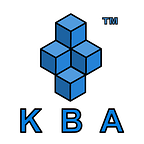Centralized & Decentralized Exchange: Glaring At Problems & Possibilities
By Anju B Nair, Sr. Technical Content Writer Kerala Blockchain Academy
Welcome to Part 3 of the Blockchain Blog Series titled,” Blockchain 2022 Review & What’s Next in 2023". In this series, we have selected the top 10 Blockchain events and developments of 2022, followed by our outlook for the key trends in 2023. We discussed Macro Economy and Market Cycle, The Merge in the preceding weeks. And today we’re here with the third event- Centralized and Decentralized Exchange. Let’s crush this.
We keep learning the lessons of decentralization a hard way. The failure of FTX and Alameda Research has led to a “run on the banks” across the cryptocurrency markets, resembling the financial crisis of 2008. Some of the Centralized Exchanges (CEXs) and Centralized Finance (CeFi) platforms are forced to halt transfers off the site because they are overrun with users withdrawing money. A number of big venture capital firms and Web3 businesses have called out that a sizable percentage of their AUM (assets under management) or treasuries had been lost to CEXs. Well, if this is the situation on one edge, on the other end, although there have been sell-offs, Decentralized Exchanges (DEXs) and Decentralized Finance (DeFi) platforms have been operating without a hitch, allowing users to liquidate their cryptocurrency holdings or, if they’d rather, take advantage of low prices and invest. Users may have noticed a decline in the dollar worth of their portfolios, but they never lost access to their assets.
Does it qualify as consumer protection? If yes, the future of decentralized exchanges looks promising as per the statistics.
We saw decentralized exchanges (DEXs) take up a higher share of the total crypto spot trading volume. As of November 2022, DEXs took up 14% of spot trading volume, compared to 9% in October.
It is seen that peer-to-peer competitors are gaining market share as a result of the failure of FTX Trading and comparable solvency difficulties at other centralized crypto exchanges and lending platforms. It is seen to be like the Decentralized exchange trading volume has already surpassed $91 billion in November, a 79% rise from the entire month of October in 2022. Likewise, DEXs are seen to be outpacing their centralized rivals, as seen by the increase in spot trade volume. Daily DEX volume on the Ethereum blockchain is seen to grow by $2.3 billion from $278 million, as the FTX collapse is still playing out.
The Decentralized Urge
Bankruptcies, frauds, irresponsible lending, and trading are calling for better regulation of the crypto market. Crypto players seek ways to increase transparency and reassure their end users. This likely leads to increased competition among DEXs, resulting in the development of new and innovative features and services. Also, will likely include better trading interfaces, increased liquidity, and lower fees. Additionally, as blockchain technology continues to improve, DEXs will become faster and more secure, further enhancing their appeal to users. Let’s take a look at how.
DEXs USP
Increased Adoption: Decentralized exchanges (DEXs) have seen a rise in popularity and adoption as users look for more secure, transparent, and decentralized solutions for trading cryptocurrencies.
Liquidity Pooling: To improve liquidity, decentralized exchanges are starting to pool their liquidity and create a shared order book for all users. This helps to ensure that users can trade assets even in low liquidity situations.
Interoperability: Decentralized exchanges are also focused on increasing interoperability, which will allow them to link up with other exchanges and blockchain networks. This will increase the range of assets available for trading, and provide a wider network for users to trade on.
Decentralized Trading Pools: Another trend is the creation of decentralized trading pools, which allow users to pool their assets and trade collectively. This provides users with the ability to trade larger volumes, which can help to improve liquidity and increase profitability.
Trading Bots: Decentralized exchanges are also starting to use trading bots, which help to automate trading and maximize returns. This can be especially useful for inexperienced traders who want to take advantage of market movements.
NFT Trading: Decentralized exchanges are also starting to support non-fungible token (NFT) trading, which will allow users to trade unique assets such as artwork and digital collectibles.
Security Enhancements: Decentralized exchanges are constantly improving their security measures to ensure that user assets are safe and protected from cyber-attacks. This includes the use of multi-sig wallets, security audits, and regular software updates.
Blockchain Furtherance
Crypto bridges, a new innovation in blockchain technology, are one intriguing development. Token and coin exchanges are currently limited to the blockchain on which they were developed. So far trading has not been feasible across different blockchain platforms, but cross-chain technology will likely change this. Using trusted bridges, a central authority can move native money or tokens between blockchains. While with trustless bridges, trading algorithms, and smart contracts are being used to move data between chains.
Integration of traditional finance, Decentralized finance is integrating traditional finance in new ways. Real-world assets like corporate credits and mortgages can now be converted into cryptocurrency assets, thanks to blockchain technology.
One instance is the recent partnership between MJL Capital and Archblock, a division of lending protocol TrueFi. They are collaborating to integrate American community banks into the DeFi network.
To conclude, we could assume to be like the crypto industry is poised for significant transformation in the coming year. Defi ventures are expected towards becoming more in line with conventional financial models as new users get interested in decentralized technology and its financial goods. Making asset management safe and available while upholding the fundamental principles of the blockchain network is a challenge that should be keenly addressed next.
References
